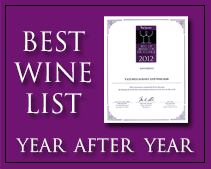Gevrey-Chambertin marks the true northern limit of the Côte d’Or
December 11, 2010
About Wines from Gevrey-Chambertin, Burgundy of France
Best wine supplier in Philippines discusses wine related topics
Gevrey-Chambertin BURGUNDY VIEW MAP
Domaine Armand Rousseau Domaine Fourrier Domaine Louis Trapet
For many, Gevrey-Chambertin marks the true northern limit of the Côte d’Or. With its 9 Grands Crus, it is by far the largest commune in the Côte de Nuits and very much its flagship.
The village, recorded as Gabriacus in 640, belonged to the Abbots of Béze whose monks were largely responsible for clearing the ground and pioneering the original vine plantations. In 1257, the Abbot of Cluny decided that fortifications were desirable and started the construction of a Château, the remains of which can still be seen at the top of the village.
Nothing momentous happened thereafter until 1553-58 when the plague struck with devastating effect and massive infestations of insects laid waste the vines for over a century. In 1847 a Royal decree granted the commune the right to add the name of its most renowned Grand Cru to its designation; thus was Gevrey-Chambertin born.
Gevrey is really a small town. Its 2,600 inhabitants benefit from shops, a wine-bar, a bistro, a hotel and a couple of prestigious restaurants, reflecting expansion, especially on the eastern side of the RN 74.
The vineyards extend to 532 ha; 9 Grands Crus account for 87ha, 26 Premiers Crus for 86ha, leaving 359 ha of Village appellation, includ-ing 11 climats from Brochon which are enti-tled to call their wine Gevrey-Chambertin.
The Village vines extend on both sides of the Dijon Beaune road, mainly to the east and north of the village centre. The Premiers Crus lie in two bands, one to the south and the other, larger, section to the west towards the Combe de Lavaux. This latter, generally regarded as the first division of Premiers Crus, includes Les Cazetiers, La Combe aux Moines, Le Clos St.-Jacques, Lavaux St.-Jacques and Etournelles St.-Jacques.
The Grands Crus are sited south of the vil-lage on a magnificent swathe of east-facing, gently sloping hillside at a height of 260-320m protected from wind-chill by the forest above. The commune has taken the unusually extrovert step – for Burgundy – of identifying each Grand Cru with a prominent sign for the benefit of its numerous visitors.
Micro-climates are particularly important here, since the Combe de Lavaux, a steep-sided valley behind the village, acts as a fun-nel for bad weather, especially for hail. Fortunately the higher ground is inimical to frost, which, like water runs off to the flatter land near the main road. In 1985, whilst more than 80 ha of village vineyards were destroyed by frost, the Premiers and Grands Crus escaped virtually unscathed. The rela-tive coolness of the upper slopes slows down the ripening process, making these vineyards less successful in marginal vintages or when bad weather necessitates an early harvest.
For centuries Chambertin’s combination of “grace and vigour, firmness and strength, finesse and delicacy … the summit of Burgundy’s potential” has inspired writers to exotic prose. Together with its neighbour Clos de Bèze, Chambertin is widely consid-ered as primus inter pares among the Grand Crus. Administrative idiosyncrasy permits wine from Clos de Bèze to be labelled Chambertin but not vice versa.
Gevrey’s soils exhibit wide diversity. The Grands Crus are planted on a base of com-pacted limestone – its substratum is clearly visible from an incision marking the site of a disused quarry on the left of the Route des Grands Crus entering Gevrey from Morey-St.-Denis. Topsoils are more or less rich in clay particles – less in Griotte-Chambertin and Chapelle-Chambertin more in Mazoyeres, which is altogether more fecund arable soil, with a 30-35 cm outcrop of well-drained gravel. Another administrative oddity permits wine from the Mazoyeres-Chambertin climat to be called Charmes-Chambertin but not vice versa.
Latricières – and Ruchottes – Chambertin are on higher ground, with a topsoil of white marl; a highish limestone content tends to give the wines a more marked dimension of hardness and tannin than the other Grand Crus.
Griotte-Chambertin, the smallest of the Grand Crus takes its name not from any cherry-tree planted there, nor from the sup-posed whiff of cherry in its wine, but rather from its shape, a concave bowl which trapped the sun so much in summer that it was like a little grill or ‘grillotte’.
Elsewhere in the commune, soil depths vary; topsoils are frequently thin with clearly visible rock outcrops. The flat land on either side of the road, where Village and Regional appellations are concentrated have more clay in their composition, giving breadth and body, but less finesse.
Such a large commune – some 110 grow-ers in Gevrey itself – is inevitably home to a wide variety of quality and styles. A Chambertin from Jean Trapet, emphasising delicacy and finesse, will have little in com-mon with Charles Rousseau’s denser, more structured version. Whilst Gevreys are broadly characterised by power and muscle, tending to start compact and needing time to unpack the best do not lack finesse. Premiers and Grands Crus from top vintages can develop well over 30 years or more.
Recent years have seen the emergence of a number of excellent “new” Domaines – some of which are profiled here. Many are long-established family enterprises which are now – usually under the aegis of a new generation – Domaine bottling, rather than selling everything in bulk, whilst others have emerged from divisions of vineyards between different members of the family. Elsewhere, poorly-performing Domaines have been transformed with the arrival of a new hand on the tiller.
Apart from the obvious stars, there are a number of estates which have all the ingredi-ents for stardom but lack the consistency of the best. Lamentably, there are also too many Domaines which continue to underperform. Common faults are excessive yields, sloppy vinification, keeping wine too long in cask and evisceratingly harsh filtra-tion – often incompetence masquerading as ‘tradition’. This is doubly inexcusable, as it both damages the reputation of the appellations produced and denies abler winemakers, who could do a much better job, access to scarce land. The shortage might just tempt someone to a charitable experiment!
Source: http://www.greatdomaines.co.za/gevrey_text.html
Are these articles useful for enhancing your wine and dine experience in the Philippines. Do they also help you with travel, leisure, vacation, dining out, nightlife and other leisure activities plans in Manila and other major cities of Philippines? Yats Restaurant hopes to provide you with ample information so you can plan your trips to Pampanga Angeles City Clark Freeport Zone whether you are travelling from Manila or other Asian countries such as Hong Kong, Shanghai, Singapore, Malaysia or Korea.
Restaurant reservations in Manila Philippines, planning of menu, selection of wine for dinner and booking a private function and event in Angeles City Clark Freeport Zone can all be handled. Yats Restaurant and Wine Bar has been regarded by many to be the premier restaurant north of Manila Philippines. Its 3000-line award-winning restaurant wine list has kept many wine lovers happy dining in this restaurant in Angeles City Clark Philippines for over a decade.
Yats Restaurant and Wine Bar was built by Hong Kong-based Yats International in 2000 to provide a world-class cozy fine dining restaurant, business meeting facilities and venues for private dinners and functions in Pampanga Angeles City Clark Freeport Zone. Pampanga Angeles City Clark Philippines was selected for this restaurant because of safety, clean air, absence of traffic and proximity to Manila and Subic.
For comments, inquiries and reservations, email Restaurant@Yats-International.com or call these numbers:
(045) 599-5600 0922-870-5178 0917-520-4401
Http://www.YatsRestaurant.com
Getting to this fine dining restaurant of Angeles City Clark Freeport Zone Pampanga Philippines
How to get to this fine-dining restaurant in Clark Philippines? Once you get to Clark Freeport, go straight until you hit Mimosa. After you enter Mimosa, stay on the left on Mimosa Drive, go past the Holiday Inn and Yats Restaurant (green top, independent 1-storey structure) is on your left. Just past the Yats Restaurant is the London Pub.











